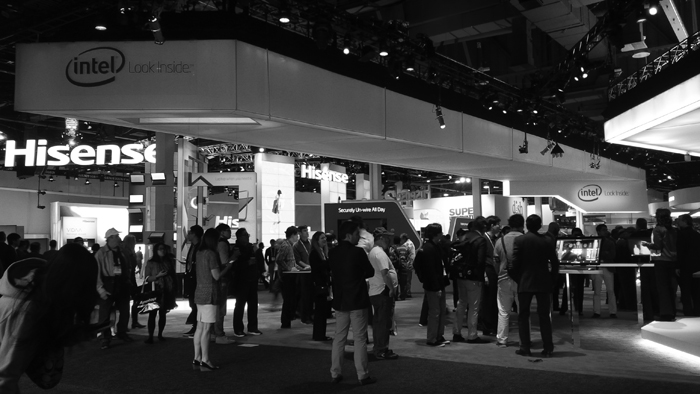Thousands of journalists, tech enthusiasts, and PR managers gathered in the Las Vegas strip for the Consumer Electronics Show (CES) from Jan. 6 to 9, the world’s largest technology trade show. CES is known for showcasing the upcoming year’s biggest and brightest technology, and this year was no exception. Here are the top three trends of 2015.
1. The Internet of Things
The idea is basic: collect data from the objects we use in our daily lives to then be sent to cloud servers to be analyzed—known as the Internet of Everything. At CES, the Internet of Everything was everywhere—from remote-controlled guns to exercise chairs. In the future, according to The Verge editor Dieter Bohn, “Doors will lock themselves, thermostats will program themselves, cameras will monitor your home for intruders, [and…] most importantly, [things] will talk to each other.”
Samsung put the most emphasis on the Internet of Things in ‘connected cars.’ Automakers such as BMW showcased new self-parking and self-braking cars, while Hyundai showed off a smartwatch that could start a car. Chevrolet announced that its cars can now predict when parts need to be replaced.
2. Body gadgets
The price of sensors, processors, and chips have plummeted over the last few years, allowing companies to integrate them into other objects. Wearable gadgets were another dominant theme at CES this year. Garwin and LG displayed smartwatches that could control music, track steps, and monitor fitness. HTC and Under Armour announced a partnership that would develop ‘smart’ clothing to track heart rate and other fitness measurements. A motorized belt named ‘Belty’ was also introduced by the start-up Emiota, which automatically adjusts the belt for user comfort, while also acting as a fitness tracker.
3. Intel innovates
“We are moving from a two-dimensional world to a three-dimensional world,” stated Intel CEO Brian Krzanich in his presentation on Jan. 6, 2015. The reason for this shift, according to Krzanich, is Intel’s RealSense technology, a camera that senses depth. At its most basic level, it allows a picture to be refocused after it is taken. Other applications include 3D printing, 3D displays, and computers that will recognize gestures—a user interface where taps on a touchscreen are replaced by hand waves. While useful to consumers, this technology has potential elsewhere too. Drones will be able to use the cameras to map out the world around them; during the keynote, a group of them navigated an obstacle course without any remote control. RealSense would even able to give the blind a way to ‘see’ the world around them through haptic feedback.
Intel’s Broadwell battery range was the other important announcement from the processor goliath. Promising 20 to 30 per cent better battery life than current generation chips and 35 percent more transistors (for a total of 1.3 billion), these processors and the PCs that house them would be dramatically more power efficient, thin, and powerful.









